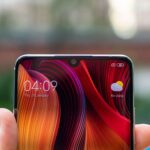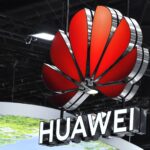
Huawei Technologies has released its first flagship smartphone since the US sanctions that restricted their every move with technology development. The new smartphone by Huawei is powered by its custom operating system dubbed HarmonyOS.
The new Huawei smartphone has two models, including P50 and P50 Pro running on the HarmonyOS. These devices are expected to roll out with HarmonyOS 2 as its default OS — the Chinese smartphone maker has continued to release HarmonyOS to existing smartphones under its brand.
At the time, when the sanctions were in their prime, the Chinese tech company couldn’t manufacture more phones as well as they could not obtain American components essential for building its devices.
Even Google had to terminate their contract with Huawei — this influenced the shift towards embracing HarmonyOS instead of the Search Giant’s Android as Huawei’s devices no longer receive OS updates from Google.
Just as the US sanctions influenced Google to restrict the Chinese smartphone maker from accessing its services and apps, Huawei sought an open-source to support its smartphones. Still, Techbooky suggests Huawei’s HarmonyOS is closely related to Google’s Android, and these devices are likely to be powered by 4G connectivity.
Before the current P50 series by Huawei, the Chinese gadget maker has reportedly used its custom processor to power its smartphones — using the Kirin 9000 processor is expected to rise complications attached to the previous sanctions on the Chinese.
Huawei’s relentlessly used third-parties semiconductors such as Qualcomm’s Snapdragon 888 4G chipset with Adreno 660 graphics to power its latest P50 series. Remember, Qualcomm proposed to solely deliver Huawei from its sanctions — Qualcomm is an American chip manufacturing company.
Huawei’s introduced its P50 series flagship smartphone to its domestic marketplace, free from potential complications from the American government.
P50 and P50 Pro have slight differences in inch sizes — P50 is built with a 90Hz refresh rate, while P50 Pro has a 120Hz refresh rate. Still, both devices have the same look compared with other Android devices — a 13MP front camera that appears as a hole on either of the P50 series.
Huawei’s built its P50 series rear camera as a device with IP68-rated for water and dust resistance. P50 Pro has 50MP color and 40MP mono True-Chroma lenses — a 13MP ultra-wide and a 64MP telephoto camera.
P50 and its Pro version are built with 66W that supports supercharging. Although their battery capacity is quite different in sizes as well — P50 has a 4100 mAh battery capacity while P50 Pro has a 4360 mAh battery capacity.
Since Huawei’s smartphone focuses on the Chinese market, the P50 series cost price ranges per its memory capacity. Huawei tagged P50 at 4,488 yuan which is equivalent to $695 and P50 Pro costs 5,988 yuan, which is equivalent to $927.
By September, the P50 series should be available for commercial use. Still, the Chinese smartphone maker is yet to confirm if its smartphones will be available for global distribution except for China.
Discover more from TechBooky
Subscribe to get the latest posts sent to your email.







